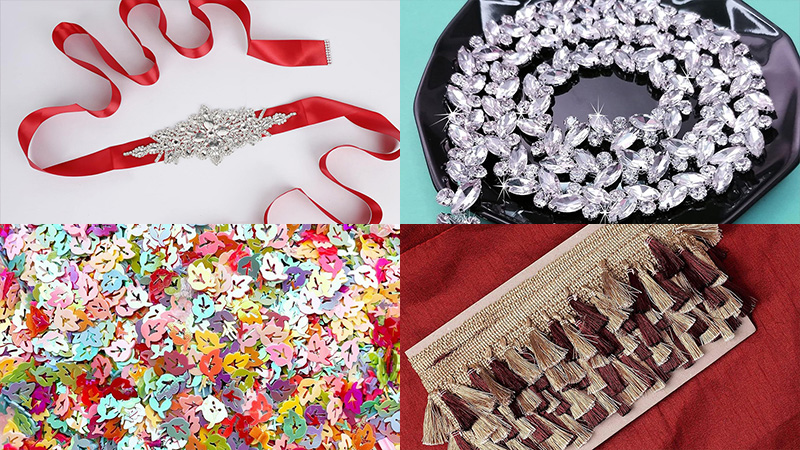
Step into the enchanting realm of embellishments, where creativity takes center stage. Embellishments bestow projects with an exquisite touch, infusing them with character and a distinct flair.
Ranging from the grandeur of sizable adornments to the subtlety of dainty accents, embellishments offer a universe of possibilities. Delve into a world where beads, sequins, rhinestones, ribbons, buttons, and appliqués converge to shape unparalleled artistry.
This article beckons you to embark on a journey of exploration, unveiling the diverse array of embellishments and their transformative potential in crafting creations that are as unique as they are captivating.
1. Embroidery
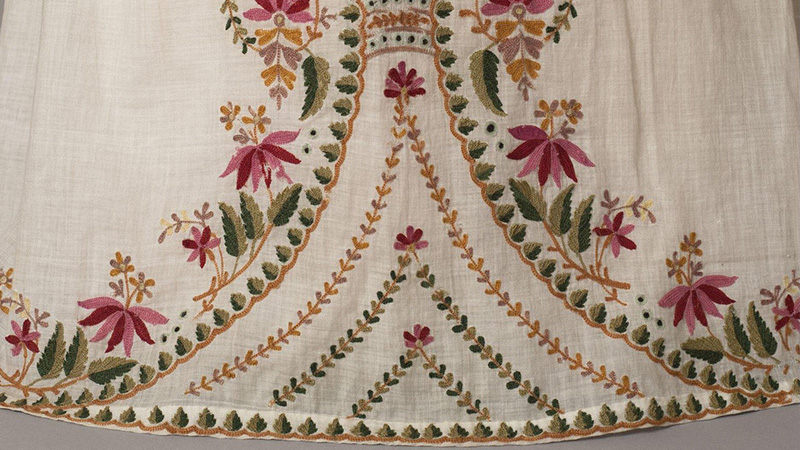
Embroidery is an art form that has been around for centuries and is used to decorate fabric or other materials with thread or yarn. This ancient technique involves stitching intricate designs onto the surface of the fabric, using a needle and thread.
It is a craft that requires great skill and patience. Embroidery can also involve incorporating other materials such as pearls, beads, quills, and sequins into the design.
These materials provide texture and depth to the embroidery, allowing for a unique and beautiful look.
Embroidery is a very versatile craft and is used to decorate clothing, accessories, and even home decor. It can be used to create monograms, logos, and other intricate designs.
Whether you are a beginner or a master of the craft, you will find that embroidery is a great way to express your creativity and add a touch of elegance to any project.
2. Appliqué
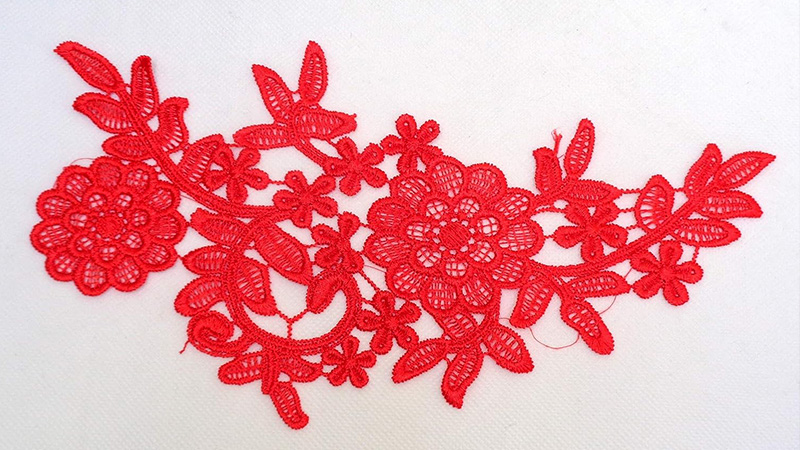
Appliqué is a type of needlework that involves sewing or sticking fabric pieces of different shapes and patterns onto a larger piece of fabric. It is a popular form of decoration that is commonly used on garments.
The technique of appliqué can be done either by hand stitching or with the use of a machine. Hand stitching appliqué involves cutting pieces of fabric into different shapes and patterns and then attaching them to the larger fabric with the use of a needle and thread.
This method is more labor-intensive and requires more skill but the results are usually more intricate and detailed. Using a machine for appliqué is less time-consuming and often results in a more uniform appearance.
This method involves using a special type of thread and needle that is designed to attach the appliqué pieces to the fabric without the need for hand stitching.
The machine stitches the pieces in place, creating a secure and permanent bond. Appliqué is a great way to add a unique and decorative touch to any clothing item or fabric project.
It is a traditional needlework technique that has been used for centuries and continues to be a popular choice for those looking to add a special touch to their projects.
3. Sequin
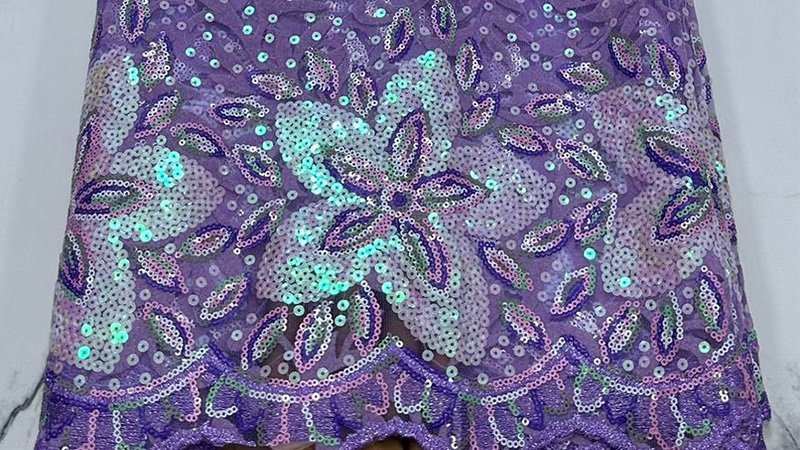
A sequin is a small, round, often shiny decorative item. It is most commonly used in clothing and other fashion accessories, such as bags and jewelry.
It is also used to adorn items such as cards and scrapbooks.
Sequins come in a variety of shapes and sizes and can be made from a variety of materials, including plastic, metal, and fabric. Sequins are sometimes referred to as paillettes, spangles, or diamanté.
Paillettes are flat discs with a hole in the middle.
They are usually made of metal and are often used for decorations on clothing. Spangles are small metal pieces cut into shapes and are often used to cover fabrics.
Lastly, diamanté is a small glass bead that is cut with facets to create a sparkle.
Sequins are a popular choice for adding a touch of sparkle and glamour to any look. They are often used on evening gowns, cocktail dresses, and other formal attire.
They can also be used to add a hint of fun and whimsy to casual outfits.
Sequins can also be used to create eye-catching artwork, such as in quilts and scrapbooking projects.
4. Bead
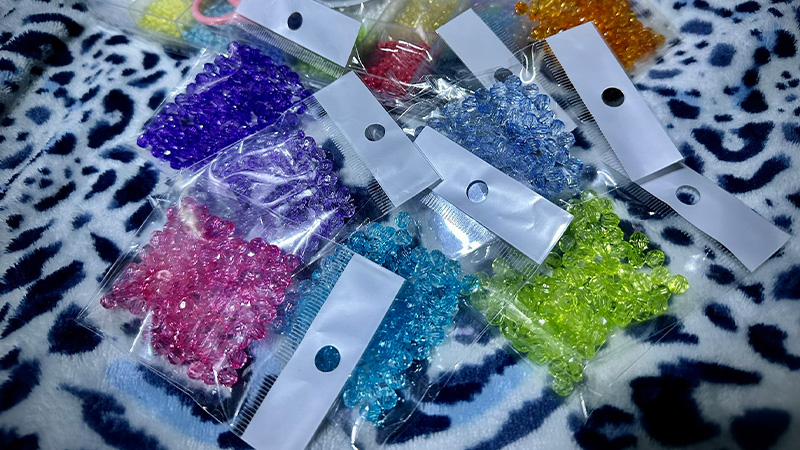
Beads are a popular accessory for crafts and jewelry-making. They come in a variety of shapes and sizes and can be made from a range of materials, including stone, bone, shell, glass, plastic, wood, or pearl.
Each bead has a small hole in it, allowing it to be threaded onto string or wire for use in jewelry, decorations, or other crafts. Depending on the material used, beads can range from less than 1 millimeter to over 1 centimeter in diameter.
Beads are a versatile material that can be used to create a wide variety of items. They can be used to make necklaces, bracelets, earrings, and even clothing.
They can also be used to decorate other craft items such as boxes, cards, and other objects.
Beads can be used to make designs, patterns, and even words. Beads are also a popular choice for use in scrapbooking and other paper crafting projects. The type of bead chosen for a project depends on the desired result.
Different materials create different visual effects, from the bright, shiny look of glass beads to the more muted tones of wood beads. Additionally, some materials are better suited for certain types of projects, such as the durability of stone beads for use in jewelry making.
Beads are a great way to add a unique and eye-catching touch to any craft project. With the variety of materials, sizes, and shapes available, there is sure to be a bead to fit any project.
5. Lace
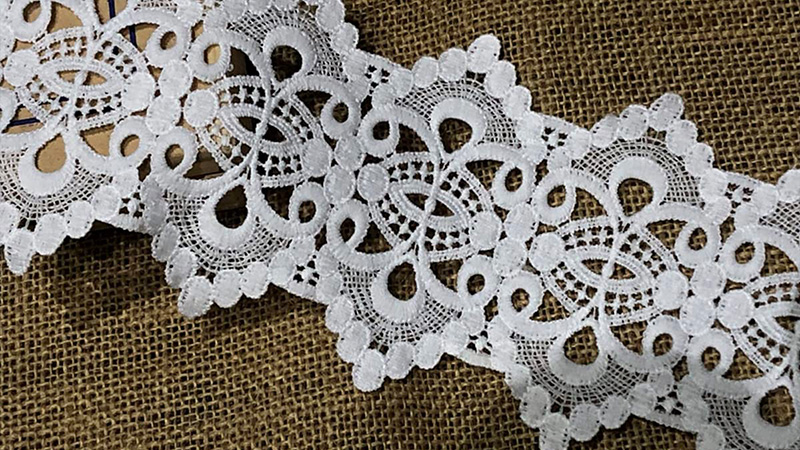
Lace is an intricate and delicate fabric that is made from yarn or thread in a web-like pattern. It is usually made by either machine or by hand. There are two primary types of lace: needlelace and bobbin lace.
Needlelace is created by intertwining several fine threads with a needle, while bobbin lace is made by intertwining and braiding multiple threads that are wound on bobbins.
In addition to these two types, there are also other types of lace such as knitted and crocheted lace.
Knitted lace is made by interlocking loops of yarn on knitting needles, while crocheted lace is created by looping yarn with a crochet hook. Lace has been used in clothing, decorations, and accessories for centuries and is still popular today.
It is a versatile material that can be used to create beautiful items with intricate detail.
6. Fringe
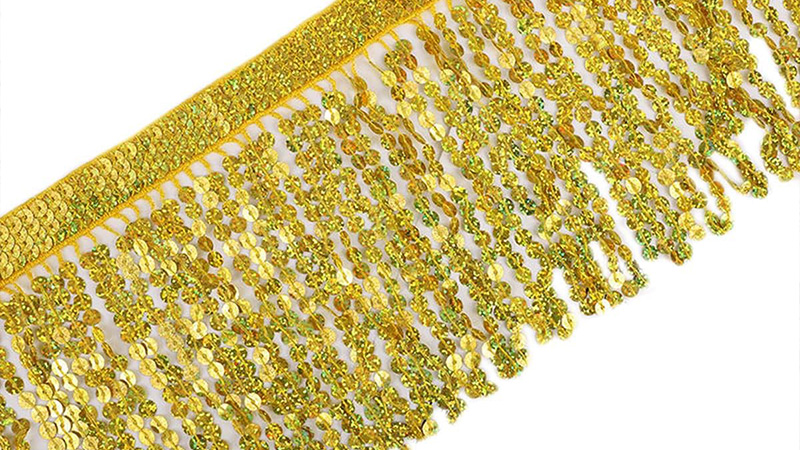
Fringe is a decorative embellishment commonly used to enhance the look of clothing, upholstery, and drapery. It is a thin strip of fabric, usually with frayed edges, that is attached to the edge of a textile item.
The most common way of applying fringe is by sewing the material onto the item. Fringe has been around since ancient times, with its original purpose being to prevent a cut piece of fabric from unraveling or fraying.
This is because hemming, the technique used to prevent fraying, was not widely used until the 18th century.
The frayed edges of the fringe provided a neat finish to the fabric and helped to keep the edges from unraveling. Today, fringe is still commonly used in clothing and upholstery. It adds a unique and eye-catching aesthetic to any textile.
It can be used to create a bold look or add a subtle texture to a piece. Fringe can also be used to make a statement, such as on a sash or epaulet. In the modern era, fringe is also used in interior decorating. It can be used to embellish curtains, coverings, and furniture.
It can be a great way to add a touch of elegance and sophistication to a space. Overall, fringe is an ancient embellishment that is still used today to add interest and texture to clothing and home decor.
It is a versatile and timeless decoration that can be used to create a unique and stylish look.
7. Piping
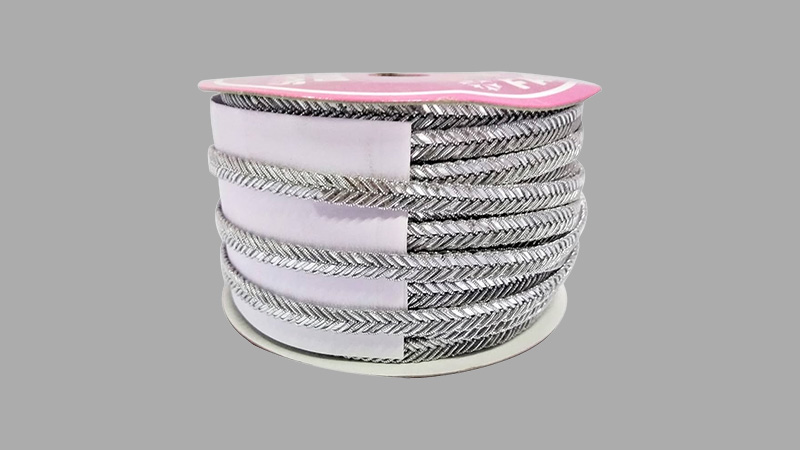
Piping is a type of trim or embellishment used in sewing to define the edges and style lines of a garment or other textile object. This trim consists of a strip of fabric that is folded and sewn into a seam, creating a “pipe” shape.
To achieve this look, the fabric strip is usually cut on the bias, which is a diagonal angle relative to the fabric’s grain. This technique allows for the fabric to stretch and move with the garment, creating a smooth, curved look.
Piping is often used to finish the edges of a garment, add decorative accents, and even create structure on a garment, such as a collar or cuffs. Additionally, piping can be used to join two pieces of fabric together, creating a seamless look.
This is often seen in the classic tailored jacket, where the lapels and collar are piped together. Piping is an essential technique for any seamstress and can help to create a professional, polished look.
8. Patchwork
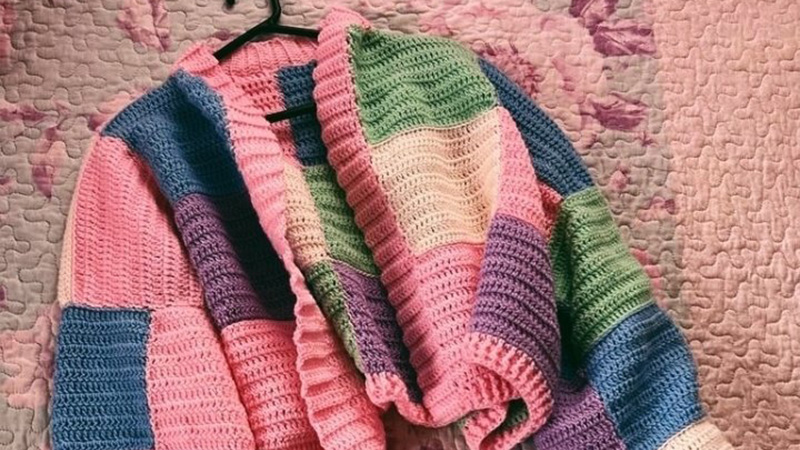
Patchwork is a type of needlework that uses pieces of fabric to create a larger design. It involves measuring and cutting pieces of fabric into basic geometric shapes which are then sewn together.
These shapes are often repeated in a pattern to create the larger design.
It is a skill that has been used for hundreds of years in a variety of cultures. Patchwork is often used to create quilts, wall hangings, clothing, and other decorative objects.
It can be used to create intricate designs or simply to add texture and interest to a piece.
The fabric pieces can be a variety of different colors, patterns, and textures. This allows for endless creative possibilities when making a patchwork. Patchwork is a great way to use up fabric scraps, as well as to create something unique and beautiful.
It is also a relatively simple craft that can be learned by anyone with a basic understanding of sewing. With a few supplies and some patience, anyone can make beautiful patchwork creations.
9. Quilting

Quilting is an age-old craft that involves stitching together multiple layers of fabric to create a quilt. It is a process that requires a great deal of skill and expertise and can be done either by hand or with a machine.
When done by hand, the quilting process involves a needle and thread to join the layers of fabric together. A sewing machine, a specialized longarm quilting system, or even a hand-held quilting tool can be used to quilt when done mechanically.
Each method of quilting has its own unique advantages and disadvantages. Hand quilting offers a great deal of control in creating intricate designs and patterns, as well as giving the quilter a more personal connection to the quilt they are creating.
However, it is a lengthy process and requires a lot of time and patience. In contrast, using a machine to quilt can be done much faster and with more precision. It can also save time and money if the project is particularly large or complex.
The downside is that the quilter is somewhat limited in their ability to create intricate patterns, as the machine’s movements are pre-programmed. Finally, a longarm quilting system offers the speed and precision of a machine, as well as the flexibility to create more intricate patterns.
It requires a specialized machine, which can be expensive to purchase and maintain. No matter which method of quilting is used, the end result is a beautiful quilt that can be treasured for years to come.
Quilting is an incredibly rewarding craft that can be enjoyed by both experienced and novice quilters alike.
10. Rhinestone
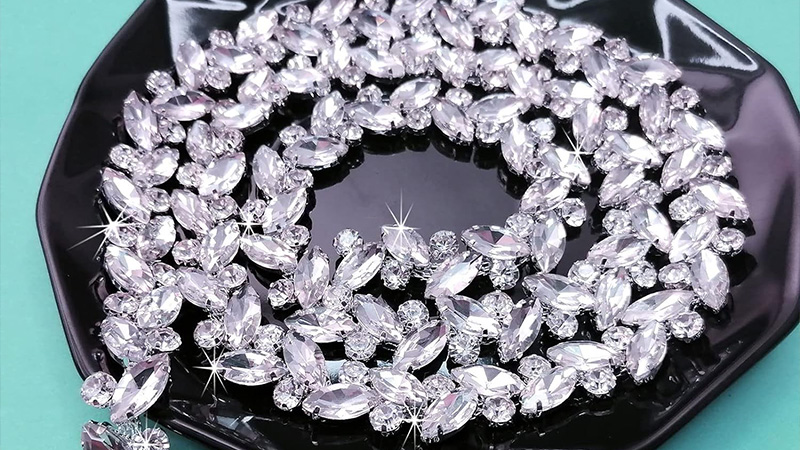
A rhinestone, paste or diamante is a decorative stone that has been designed to resemble a diamond. Originally, these stones were crafted from natural rock crystal.
This is a mineral that has a glass-like appearance and is found in many parts of the world.
However, since the nineteenth century, rhinestones have been made from crystal glass or synthetic polymers such as acrylic. The appearance of these modern rhinestones is very similar to that of a diamond, making them a popular choice for costume jewelry.
The lower cost of the stones also makes them a desirable choice for those looking for a more affordable alternative to diamonds. Rhinestones are often used to add sparkle and glamour to clothing, accessories, and home decor.
11. Beading
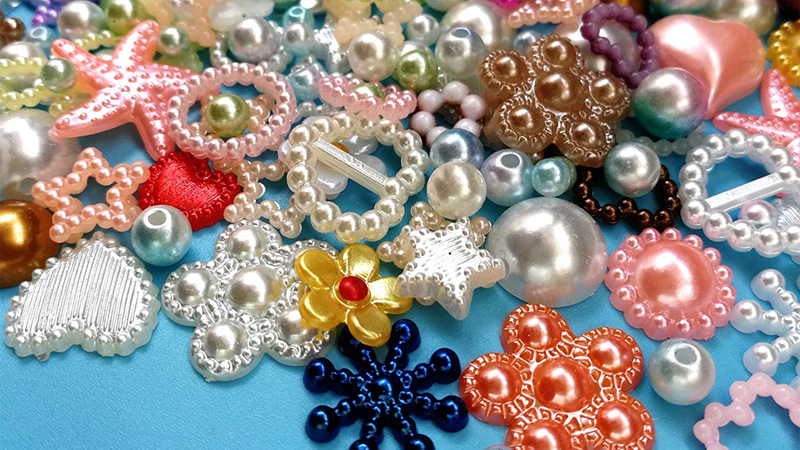
Beadwork is an ancient art form that has been used to create beautiful pieces of jewelry and artwork for centuries. It involves attaching beads to a thread or thin wire with a needle.
The beads come in a variety of materials, shapes, and sizes, and the type of art that is created depends on the type of beads used. Beads can be made from glass, metal, stone, wood, and even plastic.
The size of the beads also varies, from tiny seed beads to large statement beads. The shape of the beads can also be varied, from round to square to heart-shaped.
The process of beadwork requires patience and skill.
The beads are usually strung onto the thread or wire with the help of a needle. Once the beads are on the thread or wire, they can be sewn onto fabric or used to create intricate patterns.
Many different techniques can be used when creating a beadwork piece, such as weaving, knotting, and braiding. Beadwork is not only used to create jewelry and artwork but it can also be used to make clothing and accessories.
Beaded garments and accessories have been worn for centuries and are still popular today. Beadwork is also used to create bags, purses, and other decorative objects.
Overall, beadwork is a versatile art form that has been used to create beautiful and unique pieces of jewelry, artwork, and clothing for centuries. It is a skill that requires patience and creativity, and the results can be stunning.
12. Embossing
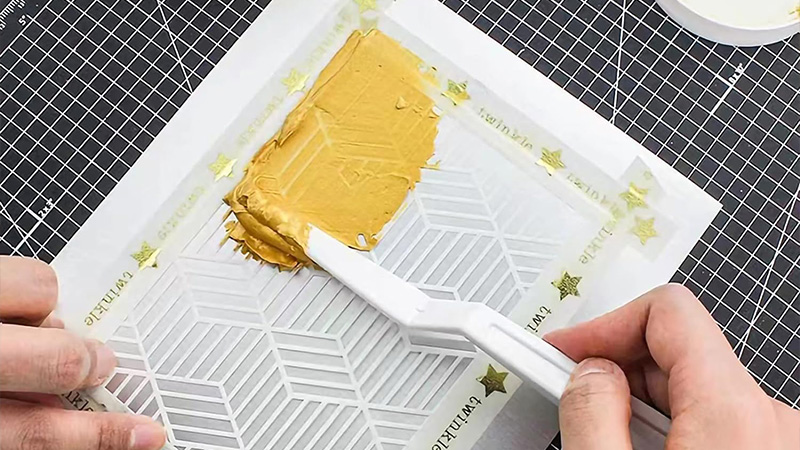
Embossing and debossing are two processes used to create images and designs on paper and other materials. Embossing is the process of creating raised images and designs in the material.
This means that the pattern stands out from the background and can be felt with the fingers.
On the other hand, debossing is the process of creating recessed designs in the material. The pattern is sunken into the surface of the material so that it can be seen and felt but might protrude slightly on the reverse side.
Both embossing and debossing are used to enhance the visual appeal of paper and other materials. They are used in a variety of applications such as stationery, invitations, greeting cards, book covers, business cards, and more.
The process of embossing and debossing can be done either manually using special tools or with a printing press. The images and designs created by embossing and debossing are often intricate and can be quite beautiful.
Embossing and debossing are excellent way to add texture and dimension to paper and other materials. These processes can be used to create a variety of effects, from subtle to bold.
They can be used to create images and patterns that are not possible with other printing methods. By adding raised or recessed images and designs, embossing and debossing can make a piece of paper or material stand out from the rest.
13. Tassel
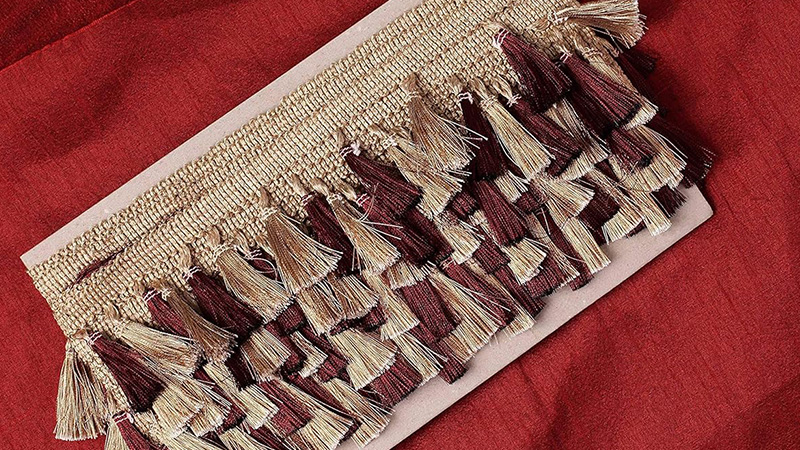
A tassel is a decorative accessory that is used to embellish fabric and clothing. It is a small grouping of strands that are often made of silk, cotton, wool, or synthetic fibers, and are connected together at the top by a loop or knot.
The strands can be of different colors, textures, and lengths, giving the tassel a unique look. Tassels are a popular decorative element in many cultures around the world.
They can be found on traditional clothing, such as saris and kimonos, as well as on accessories like scarves and purses. They are also used to embellish home decor items, such as curtains, pillows, and blankets.
Tassels can be seen in different forms in various cultures, from colorful, intricate designs to simpler, plainer styles. Regardless of the form, tassels are a universal ornament that adds a touch of sophistication and beauty to any piece of fabric or clothing.
14. Pearls
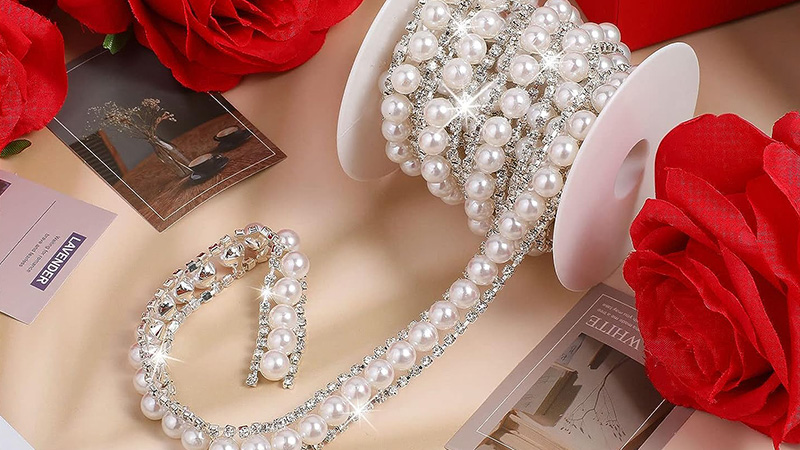
A pearl is a unique and beautiful object that is created within the soft tissue of a shelled mollusk or another animal, such as a fossil conulariid. It has a hard, glistening surface, and is made up of calcium carbonate in a crystalline form.
This crystalline form is deposited in concentric layers, like the shell of a mollusk, giving the pearl its characteristic shape and shine. The process of creating a pearl is quite complex.
It begins when an irritant, such as a grain of sand, enters the mollusk or other animal.
The mollusk then secretes a substance around the irritant to protect itself. This substance is made up of calcium carbonate and other organic substances and is called nacre.
As the mollusk continues to secrete nacre, it builds up in layers around the irritant.
Over time, these layers form the pearl, which can range in size from very small to several inches in diameter. Pearls have been used for centuries as a symbol of beauty, wealth, and power.
They are often used in jewelry, as well as in religious ceremonies and other rituals.
In some cultures, pearls are seen as symbols of good luck and are believed to bring good fortune to those who wear them. No matter the size or shape, pearls are unique and exquisite objects that have captivated people for centuries.
The process by which they are made, and the fact that each pearl is one of a kind, make them truly special.
15. Glitter
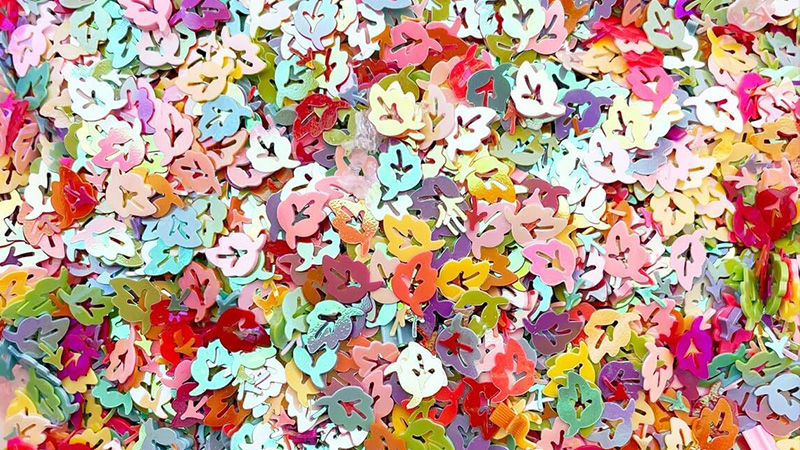
Glitter is a type of decoration often used to give a fun and sparkly effect to a variety of items. It is made up of small, flat reflective pieces that have been precisely cut to create various shapes and sizes, as well as to produce a variety of colors.
When light strikes the glitter particles, it is reflected off them at different angles. This makes the surface appear to sparkle or shimmer, giving it a dazzling effect.
Glitter is similar to other decorative items such as confetti, sparkles, and sequins, but it is usually smaller in size. Glitter can be used to decorate paper, fabric, candles, and many other items in order to give them a unique and eye-catching look.
16. Batik
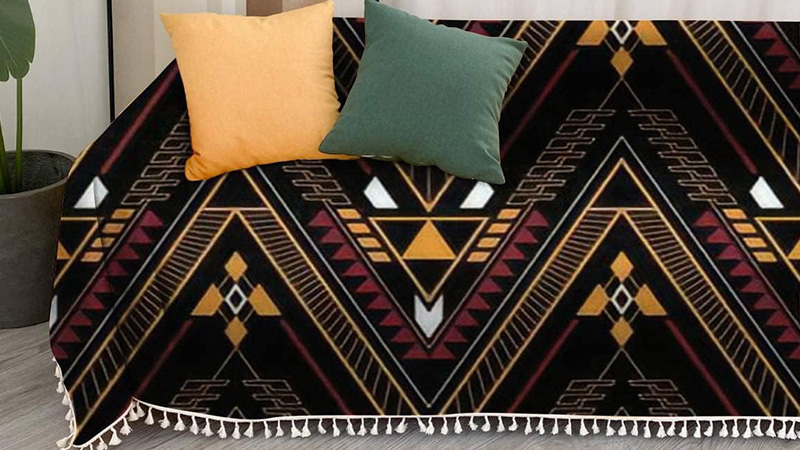
Batik is an Indonesian art form that has been practiced for centuries. It involves the use of wax-resistant dyeing on fabric, creating intricate and beautiful patterns.
The technique originated in Java, Indonesia, and is still practiced by artisans today.
To create a batik pattern the artist begins with a blank piece of fabric. They then use a “canting”, a spouted tool, to draw dots and lines of wax onto the fabric.
The fabric is then dipped into dye, with the waxed areas resisting the dye, creating a pattern.
Alternatively, the artist can use a “cap”, a copper stamp, to print a resist pattern onto the fabric. Once the dye is applied, the wax is removed, leaving behind a vibrant and beautiful pattern.
Batik is an art form that is highly respected in Indonesia, and it continues to be an important part of their culture.
17. Kantha
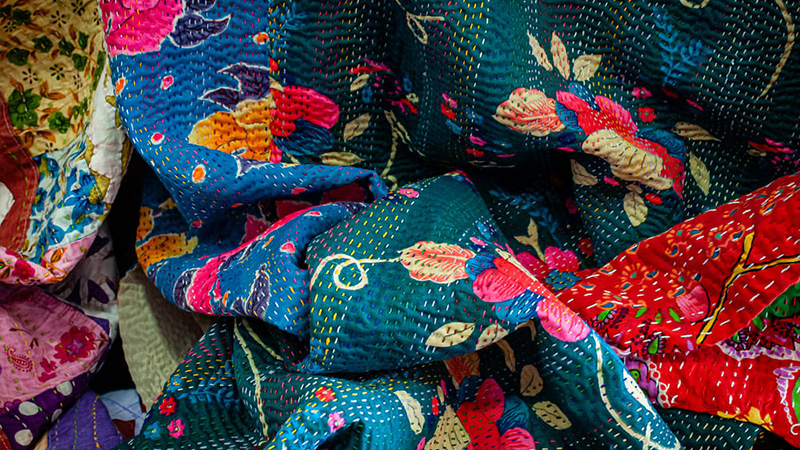
Kantha is a type of traditional embroidery craft which is popular in Bangladesh and parts of eastern India, primarily in West Bengal, Tripura and Odisha.
It is an ancient art form that has been practiced for centuries and is still popular today.
The technique involves taking multiple layers of old saris and stitching them together to make a single piece of fabric. The fabric is then used to create beautiful cushion covers and other items of apparel.
The stitching is done by hand and is usually done in a simple running stitch style. The unique style of this craft is what makes it so special and distinct.
The end result is a piece of fabric that is both strong and durable, and also aesthetically pleasing.
Kantha embroidery is a representation of the cultural heritage of Bangladesh and eastern India and is an important part of their identity.
18. Sash
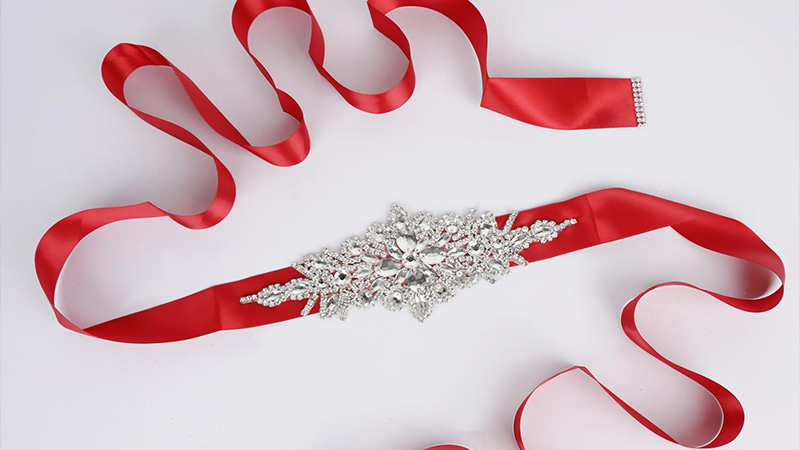
A sash is a type of clothing accessory that is typically worn on special occasions. It is a large and often colorful ribbon or band of material that is placed around the body.
It is usually draped from one shoulder to the opposing hip and back up, or else encircling the waist.
The sash around the waist can be worn on a daily basis, but the sash from shoulder to hip is usually reserved for more special occasions. It is usually worn as a decorative addition to an outfit and can add an element of formality and elegance to a person’s look.
It can also be a symbol of status and respect, such as when a sash is worn by a member of a royal family or a person of importance. Sashes come in a variety of colors, fabrics, and styles, and can be worn to reflect a person’s personality or to match the occasion.
They are often decorated with embroidery, beading, and other types of embellishments. The sash can be a functional item of clothing, as well, as it can be used to carry items such as keys or a pocket watch.
In summary, a sash is a type of clothing accessory that is usually large and colorful. It is typically worn around the body, either draped from one shoulder to the opposing hip and back up or else encircling the waist.
It is usually worn on special occasions and can be a symbol of status and respect. It comes in many colors, fabrics, and styles, and can be decorated with embroidery, beading, and other types of embellishments.
19. Machine Embroidery
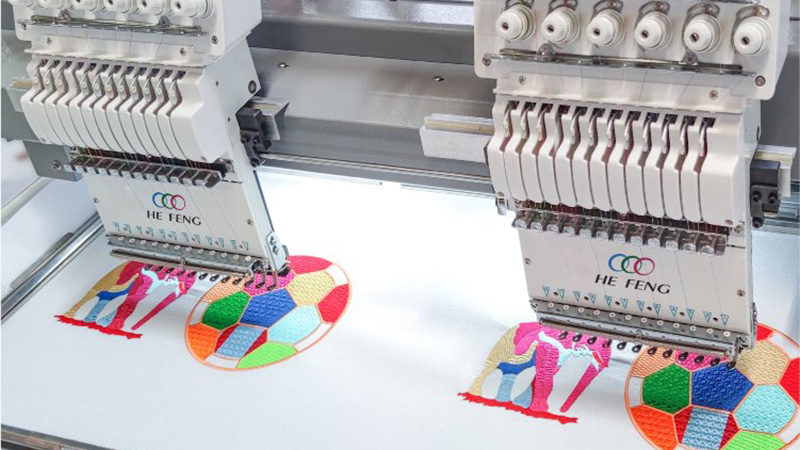
Machine embroidery is a popular form of embroidery that uses sewing machines or embroidery machines to create patterns on textiles. It is used in a variety of ways, such as for product branding, corporate advertising, and uniform adornment.
It can also be used in the fashion industry to add a decorative touch to clothing and apparel. Machine embroidery is a fast and efficient way to create decorative patterns on fabric.
The process involves using a machine to stitch the design onto the fabric, and the pattern can be customized according to the individual’s needs or preferences.
The machine is able to produce intricate and complex designs, and it is possible to create a variety of textures and colors. Some of the most common uses for machine embroidery include product branding, corporate advertising, and uniform adornment.
Businesses often use machine embroidery to create logos, slogans, and other designs for their products or uniforms. Uniforms, such as those worn by nurses, doctors, and other professions, are often embroidered to add an extra layer of professionalism.
The fashion industry also uses machine embroidery to decorate garments and apparel. Designers can use machine embroidery to create patterns and designs on clothing that will make it stand out from the rest.
They can also use machine embroidery to add a personal touch to clothing, such as a monogram or special message. Overall, machine embroidery is a versatile and efficient way to decorate textiles.
It is used in a variety of ways, such as for product branding, corporate advertising, uniform adornment, and fashion design. It is also a great way to add a personal touch to clothing and apparel.
20. Bead Embroidery
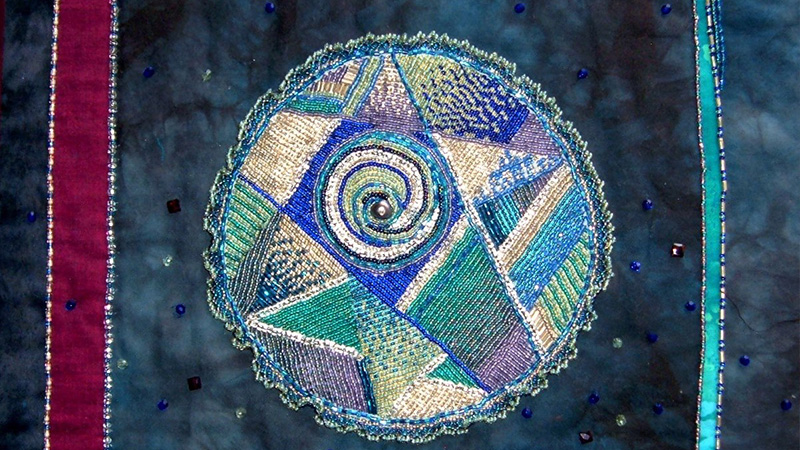
Bead embroidery is a form of beadwork that uses a needle and thread to attach beads to a material surface. It is an embellishment that is added to the fabric, suede, or leather and does not contribute to the structure of the textile.
This is unlike other forms of beadwork such as bead weaving, bead crochet, and bead knitting, which use the beads to form the actual structure of the textile. Bead embroidery is a decorative technique which involves stitching beads onto the surface of a fabric.
This can be done with a variety of beads, such as glass, metal, and plastic beads. The beads are stitched onto the fabric using a needle and thread and can be used to create intricate patterns and designs.
This technique can be used to decorate clothing, bags, pillows, and many other items. Bead embroidery is a versatile technique that can be used to make a variety of unique and beautiful pieces.
It can be used to create intricate patterns and designs, or even to add a subtle touch to an otherwise plain fabric. Bead embroidery is a unique way to add color and texture to any fabric or item, and can be used to create one-of-a-kind pieces..
21. Swarovski Crystals
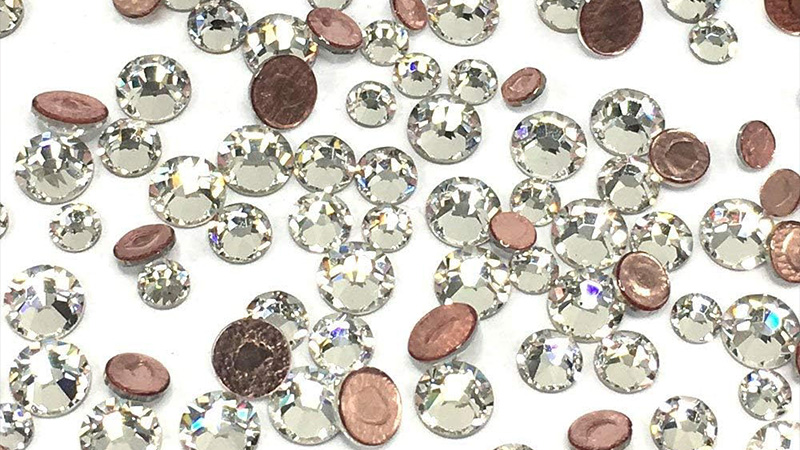
Swarovski crystals, renowned for their unparalleled brilliance, are exquisite glass crystals created by Swarovski AG. Meticulously cut and polished, these crystals boast exceptional clarity and vibrancy, making them a favored choice for jewelry, fashion, and home decor embellishments.
Crafted with precision and innovation since their inception in 1895, Swarovski crystals capture and refract light like no other, adding a touch of glamour and elegance to any creation.
From dazzling necklaces to sparkling evening gowns, Swarovski crystals continue to enchant designers and enthusiasts worldwide with their timeless beauty and captivating allure.
Conclusion
Embellishments serve as an artistic gateway to elevate garments and craft projects from ordinary to extraordinary. Whether it’s the delicate shimmer of beads and sequins or the intricate charm of embroidery and appliqué, these decorative elements breathe life into creations.
Embracing a spectrum of techniques, embellishments offer a canvas for self-expression and innovation, enabling the manifestation of unique visions. As creators, we have the privilege of tapping into a boundless reservoir of creative choices.
By exploring and experimenting with embellishments, we unlock the potential to transform the mundane into the remarkable. Thus, let us continue to embrace the journey of crafting beauty through textures, colors, and artistry, one embellishment at a time.
Leave a Reply